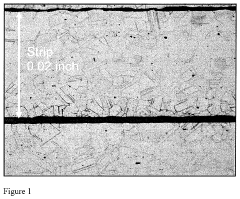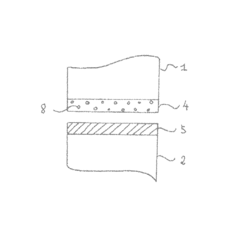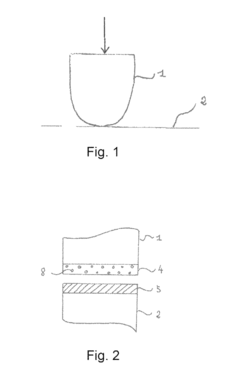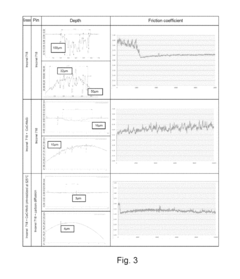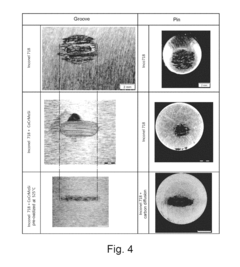Learn to Integrate Nichrome in Robotics Engineering
JUL 11, 20259 MIN READ
Generate Your Research Report Instantly with AI Agent
Patsnap Eureka helps you evaluate technical feasibility & market potential.
Nichrome in Robotics: Background and Objectives
Nichrome, an alloy composed primarily of nickel and chromium, has been a cornerstone in various industrial applications for decades. Its unique properties, including high electrical resistance and excellent heat resistance, have made it invaluable in heating elements and electrical resistors. As robotics engineering continues to evolve, the integration of nichrome presents exciting opportunities for advancing the field.
The evolution of robotics has been marked by continuous improvements in materials, sensors, and control systems. From early industrial robots to today's sophisticated autonomous machines, the field has consistently pushed the boundaries of what's possible. The integration of nichrome in robotics engineering represents a significant step forward in this ongoing progression, offering potential solutions to longstanding challenges in power management, thermal control, and sensor technology.
The primary objective of incorporating nichrome into robotics is to leverage its unique properties to enhance robot performance, efficiency, and functionality. By harnessing nichrome's high electrical resistance, robotics engineers aim to develop more precise and responsive heating elements for applications such as 3D printing heads in manufacturing robots or temperature-sensitive sensors in environmental monitoring drones. The material's heat resistance also opens up possibilities for creating more durable components that can withstand extreme conditions, potentially expanding the operational range of robots in harsh environments.
Another key goal is to explore nichrome's potential in improving energy efficiency in robotic systems. As power consumption remains a critical concern in robotics, especially for mobile and autonomous robots, nichrome's properties could lead to the development of more efficient power distribution systems and energy harvesting mechanisms. This could significantly extend the operational time of robots, particularly in remote or challenging environments where frequent recharging is impractical.
Furthermore, the integration of nichrome aligns with the broader trend towards miniaturization in robotics. As robots become smaller and more specialized, the need for materials that can perform multiple functions in compact spaces increases. Nichrome's versatility makes it an attractive option for creating multifunctional components that can serve as both structural elements and active parts of the robot's electrical or thermal systems.
As research in this area progresses, it is anticipated that the integration of nichrome will contribute to advancements in soft robotics, where flexible and adaptable materials are crucial. The potential applications range from more responsive artificial muscles to self-regulating thermal management systems in wearable robotic devices. These developments could have far-reaching implications across various sectors, including healthcare, space exploration, and advanced manufacturing.
The evolution of robotics has been marked by continuous improvements in materials, sensors, and control systems. From early industrial robots to today's sophisticated autonomous machines, the field has consistently pushed the boundaries of what's possible. The integration of nichrome in robotics engineering represents a significant step forward in this ongoing progression, offering potential solutions to longstanding challenges in power management, thermal control, and sensor technology.
The primary objective of incorporating nichrome into robotics is to leverage its unique properties to enhance robot performance, efficiency, and functionality. By harnessing nichrome's high electrical resistance, robotics engineers aim to develop more precise and responsive heating elements for applications such as 3D printing heads in manufacturing robots or temperature-sensitive sensors in environmental monitoring drones. The material's heat resistance also opens up possibilities for creating more durable components that can withstand extreme conditions, potentially expanding the operational range of robots in harsh environments.
Another key goal is to explore nichrome's potential in improving energy efficiency in robotic systems. As power consumption remains a critical concern in robotics, especially for mobile and autonomous robots, nichrome's properties could lead to the development of more efficient power distribution systems and energy harvesting mechanisms. This could significantly extend the operational time of robots, particularly in remote or challenging environments where frequent recharging is impractical.
Furthermore, the integration of nichrome aligns with the broader trend towards miniaturization in robotics. As robots become smaller and more specialized, the need for materials that can perform multiple functions in compact spaces increases. Nichrome's versatility makes it an attractive option for creating multifunctional components that can serve as both structural elements and active parts of the robot's electrical or thermal systems.
As research in this area progresses, it is anticipated that the integration of nichrome will contribute to advancements in soft robotics, where flexible and adaptable materials are crucial. The potential applications range from more responsive artificial muscles to self-regulating thermal management systems in wearable robotic devices. These developments could have far-reaching implications across various sectors, including healthcare, space exploration, and advanced manufacturing.
Market Demand for Nichrome-Integrated Robotics
The integration of nichrome in robotics engineering has sparked significant market interest, driven by the material's unique properties and potential applications. Nichrome, an alloy of nickel and chromium, offers excellent heat resistance, electrical conductivity, and durability, making it particularly attractive for advanced robotic systems.
The market demand for nichrome-integrated robotics is primarily fueled by industries requiring high-temperature operations, precision control, and enhanced durability. Sectors such as manufacturing, aerospace, and healthcare are showing keen interest in leveraging nichrome's properties to develop more robust and efficient robotic solutions.
In the manufacturing sector, nichrome-integrated robots are gaining traction for applications involving high-temperature processes, such as welding, metal fabrication, and heat treatment. These robots can withstand extreme temperatures, allowing for more precise and efficient operations in harsh industrial environments. The demand for such specialized robots is expected to grow as manufacturers seek to improve productivity and reduce human exposure to hazardous conditions.
The aerospace industry is another significant driver of market demand for nichrome-integrated robotics. With the increasing complexity of aircraft designs and the need for precision manufacturing, robots equipped with nichrome components are becoming essential in tasks such as engine assembly, thermal protection system installation, and quality control inspections. The material's resistance to high temperatures and corrosion makes it ideal for use in robotic systems operating in aerospace manufacturing environments.
In the healthcare sector, nichrome-integrated robotics are finding applications in surgical instruments and medical devices. The material's biocompatibility and ability to withstand sterilization processes make it valuable for developing advanced surgical robots and minimally invasive instruments. As the demand for more precise and less invasive medical procedures grows, so does the market for nichrome-integrated medical robotics.
The emerging field of space exploration is also contributing to the market demand for nichrome-integrated robotics. Space agencies and private companies are exploring the use of nichrome in robotic systems designed for extraterrestrial missions, where extreme temperature variations and harsh environments are common. These specialized robots could play crucial roles in tasks such as planetary exploration, satellite maintenance, and space station operations.
As industries continue to push the boundaries of robotic capabilities, the market for nichrome-integrated systems is expected to expand. The material's unique combination of properties addresses many of the challenges faced in extreme operating conditions, opening up new possibilities for robotic applications across various sectors. This growing demand is likely to drive further research and development in nichrome-based robotics, potentially leading to innovative solutions and expanded market opportunities in the coming years.
The market demand for nichrome-integrated robotics is primarily fueled by industries requiring high-temperature operations, precision control, and enhanced durability. Sectors such as manufacturing, aerospace, and healthcare are showing keen interest in leveraging nichrome's properties to develop more robust and efficient robotic solutions.
In the manufacturing sector, nichrome-integrated robots are gaining traction for applications involving high-temperature processes, such as welding, metal fabrication, and heat treatment. These robots can withstand extreme temperatures, allowing for more precise and efficient operations in harsh industrial environments. The demand for such specialized robots is expected to grow as manufacturers seek to improve productivity and reduce human exposure to hazardous conditions.
The aerospace industry is another significant driver of market demand for nichrome-integrated robotics. With the increasing complexity of aircraft designs and the need for precision manufacturing, robots equipped with nichrome components are becoming essential in tasks such as engine assembly, thermal protection system installation, and quality control inspections. The material's resistance to high temperatures and corrosion makes it ideal for use in robotic systems operating in aerospace manufacturing environments.
In the healthcare sector, nichrome-integrated robotics are finding applications in surgical instruments and medical devices. The material's biocompatibility and ability to withstand sterilization processes make it valuable for developing advanced surgical robots and minimally invasive instruments. As the demand for more precise and less invasive medical procedures grows, so does the market for nichrome-integrated medical robotics.
The emerging field of space exploration is also contributing to the market demand for nichrome-integrated robotics. Space agencies and private companies are exploring the use of nichrome in robotic systems designed for extraterrestrial missions, where extreme temperature variations and harsh environments are common. These specialized robots could play crucial roles in tasks such as planetary exploration, satellite maintenance, and space station operations.
As industries continue to push the boundaries of robotic capabilities, the market for nichrome-integrated systems is expected to expand. The material's unique combination of properties addresses many of the challenges faced in extreme operating conditions, opening up new possibilities for robotic applications across various sectors. This growing demand is likely to drive further research and development in nichrome-based robotics, potentially leading to innovative solutions and expanded market opportunities in the coming years.
Current Challenges in Nichrome-Robotics Integration
The integration of nichrome in robotics engineering faces several significant challenges that hinder its widespread adoption and optimal utilization. One of the primary obstacles is the thermal management of nichrome components within robotic systems. As nichrome generates heat when an electric current passes through it, maintaining a stable operating temperature becomes crucial. Overheating can lead to performance degradation, reduced lifespan of components, and potential safety hazards.
Another challenge lies in the precise control of nichrome-based actuators and heating elements. Achieving accurate and repeatable temperature control requires sophisticated feedback systems and algorithms. The inherent thermal inertia of nichrome can result in delayed responses, making it difficult to implement rapid and precise temperature adjustments in real-time robotic applications.
The durability and longevity of nichrome components in dynamic robotic environments pose additional concerns. Repeated thermal cycling, mechanical stress, and exposure to various environmental factors can lead to material fatigue and degradation over time. Ensuring the long-term reliability of nichrome-integrated robotic systems remains a significant challenge, particularly in applications requiring continuous operation or exposure to harsh conditions.
Power management and energy efficiency present further obstacles in nichrome-robotics integration. The high power consumption of nichrome-based heating elements can strain the limited power resources of mobile robotic platforms. Balancing the power requirements of nichrome components with other critical systems in the robot demands innovative energy management solutions and power distribution strategies.
The miniaturization of nichrome-based components for integration into compact robotic designs also presents technical difficulties. As robots become smaller and more intricate, incorporating nichrome elements while maintaining overall system efficiency and functionality becomes increasingly challenging. Engineers must develop novel approaches to optimize the size, weight, and performance of nichrome components without compromising their effectiveness.
Compatibility issues between nichrome and other materials used in robotics construction further complicate integration efforts. The thermal expansion properties of nichrome may differ from those of surrounding materials, potentially leading to mechanical stress and structural integrity problems. Addressing these material compatibility challenges requires careful design considerations and the development of appropriate interfacing techniques.
Lastly, the cost-effectiveness of nichrome integration in robotics remains a concern for widespread adoption. While nichrome offers unique properties and capabilities, the associated costs of implementation, including specialized manufacturing processes and control systems, may limit its application in certain robotic applications. Striking a balance between performance benefits and economic viability continues to be a key challenge in the field.
Another challenge lies in the precise control of nichrome-based actuators and heating elements. Achieving accurate and repeatable temperature control requires sophisticated feedback systems and algorithms. The inherent thermal inertia of nichrome can result in delayed responses, making it difficult to implement rapid and precise temperature adjustments in real-time robotic applications.
The durability and longevity of nichrome components in dynamic robotic environments pose additional concerns. Repeated thermal cycling, mechanical stress, and exposure to various environmental factors can lead to material fatigue and degradation over time. Ensuring the long-term reliability of nichrome-integrated robotic systems remains a significant challenge, particularly in applications requiring continuous operation or exposure to harsh conditions.
Power management and energy efficiency present further obstacles in nichrome-robotics integration. The high power consumption of nichrome-based heating elements can strain the limited power resources of mobile robotic platforms. Balancing the power requirements of nichrome components with other critical systems in the robot demands innovative energy management solutions and power distribution strategies.
The miniaturization of nichrome-based components for integration into compact robotic designs also presents technical difficulties. As robots become smaller and more intricate, incorporating nichrome elements while maintaining overall system efficiency and functionality becomes increasingly challenging. Engineers must develop novel approaches to optimize the size, weight, and performance of nichrome components without compromising their effectiveness.
Compatibility issues between nichrome and other materials used in robotics construction further complicate integration efforts. The thermal expansion properties of nichrome may differ from those of surrounding materials, potentially leading to mechanical stress and structural integrity problems. Addressing these material compatibility challenges requires careful design considerations and the development of appropriate interfacing techniques.
Lastly, the cost-effectiveness of nichrome integration in robotics remains a concern for widespread adoption. While nichrome offers unique properties and capabilities, the associated costs of implementation, including specialized manufacturing processes and control systems, may limit its application in certain robotic applications. Striking a balance between performance benefits and economic viability continues to be a key challenge in the field.
Existing Nichrome Integration Techniques
01 Composition and properties of nichrome alloys
Nichrome is an alloy primarily composed of nickel and chromium, with varying proportions to achieve specific properties. It is known for its high electrical resistance, heat resistance, and corrosion resistance. These characteristics make it suitable for various applications in heating elements and electrical components.- Composition and properties of nichrome alloys: Nichrome is an alloy primarily composed of nickel and chromium, with varying compositions for different applications. It is known for its high electrical resistance, heat resistance, and corrosion resistance. These properties make it suitable for use in heating elements, resistors, and other high-temperature applications.
- Manufacturing processes for nichrome components: Various manufacturing processes are employed to produce nichrome components, including wire drawing, thin film deposition, and powder metallurgy. These processes allow for the creation of nichrome wires, films, and other forms used in different applications. Specific techniques may be used to control the microstructure and properties of the final product.
- Applications of nichrome in heating elements: Nichrome is widely used in heating elements due to its high electrical resistance and heat resistance. It is commonly found in electric heaters, ovens, toasters, and other appliances that require reliable and efficient heating. The alloy's ability to withstand high temperatures makes it ideal for these applications.
- Nichrome in electronic and electrical components: Nichrome is utilized in various electronic and electrical components, particularly in resistors and sensors. Its stable electrical properties and temperature coefficient of resistance make it suitable for precision resistors and temperature sensing applications. It is also used in some types of electrical contacts and connectors.
- Surface treatment and coating of nichrome: Various surface treatment and coating techniques are applied to nichrome components to enhance their properties or protect them from environmental factors. These may include oxidation treatments, protective coatings, or the application of additional layers for specific functionalities. Such treatments can improve corrosion resistance, electrical properties, or compatibility with other materials.
02 Applications in heating elements
Nichrome is widely used in the manufacturing of heating elements due to its excellent heat resistance and electrical properties. It is commonly employed in electric heaters, toasters, hair dryers, and other appliances that require reliable and efficient heating components.Expand Specific Solutions03 Use in electronic and electrical components
Nichrome finds applications in various electronic and electrical components, including resistors, thermocouples, and sensors. Its stable electrical properties and resistance to oxidation make it suitable for precision instruments and measurement devices.Expand Specific Solutions04 Thin film and coating applications
Nichrome is used in thin film deposition processes and as a coating material. Its properties make it suitable for creating thin, uniform layers on various substrates, which can be used in microelectronics, optical coatings, and other specialized applications.Expand Specific Solutions05 Manufacturing and processing techniques
Various manufacturing and processing techniques are employed to produce nichrome alloys and components. These may include melting, casting, wire drawing, and precision machining. Advanced manufacturing methods are used to create nichrome products with specific dimensions and properties for different applications.Expand Specific Solutions
Key Players in Nichrome-Enhanced Robotics
The integration of nichrome in robotics engineering is in an early development stage, with a growing market potential as robotics applications expand. The technology's maturity varies across companies, with established players like The Boeing Co. and General Electric Technology GmbH likely leading in advanced applications. Universities such as Dartmouth College and Shanghai University are contributing to research and development. Emerging companies like Nanomark Pesquisa e Desenvolvimento Tecnológico Ltda. and Kcat Enzymatic Pvt Ltd. may be exploring innovative nichrome applications in robotics. The competitive landscape is diverse, spanning aerospace, electronics, and materials science sectors, indicating a multidisciplinary approach to nichrome integration in robotics engineering.
General Electric Technology GmbH
Technical Solution: GE has integrated nichrome into their robotics engineering for industrial and power generation applications. They have developed robotic systems with nichrome-based heating elements for turbine blade inspection and repair[2]. GE's approach includes using nichrome wire in robotic welding arms for precise temperature control during welding processes[4]. The company has also incorporated nichrome sensors in robotic monitoring systems for gas turbines, enabling real-time temperature measurements in harsh environments[6].
Strengths: Broad industrial application range, robust solutions for high-temperature environments. Weaknesses: May lack specialization in consumer or medical robotics applications.
The Boeing Co.
Technical Solution: Boeing has developed advanced robotics systems incorporating nichrome elements for aerospace applications. Their approach involves using nichrome-based heating elements in robotic end effectors for precise temperature control during composite material layup and curing processes[1]. The company has also integrated nichrome wire sensors into robotic inspection systems for detecting minute structural defects in aircraft components[3]. Boeing's robotics division has further explored the use of nichrome in actuators for improved heat resistance and durability in extreme aerospace environments[5].
Strengths: Expertise in aerospace-grade robotics, advanced integration of nichrome for specialized applications. Weaknesses: Potentially limited to aerospace-specific use cases, high development costs.
Innovative Nichrome-Robotics Synergies
Nickel-chromium alloy and method of making the same
PatentPendingUS20210402524A1
Innovation
- A process involving roll compaction of nickel and chromium powders, followed by sintering and cold rolling, to produce a Ni-Cr alloy strip with a chromium content of 33 to 50 wt.% and a nickel content of at least 47 wt.%, eliminating the need for melting and thus avoiding brittle phases, and allowing for sufficient ductility and formability for use as a welding electrode sheath.
Friction adjustment interface between two parts made of nickel or nickel or cobalt-chromium alloy that are in relative motion against one another at high temperature
PatentActiveUS10113224B2
Innovation
- An adjustment interface comprising two layers is introduced: a first layer with a composition that forms a glaze-type protective oxide layer and a second layer acting as a catalyst for oxide stabilization, both deposited using thermal spray coating and thermochemical carbon diffusion, respectively, to reduce adhesive frictional wear and improve sliding properties.
Thermal Management in Nichrome-Integrated Robots
Thermal management is a critical aspect of integrating nichrome into robotics engineering, as the heat generated by nichrome elements can significantly impact the performance and longevity of robotic systems. Effective thermal management strategies are essential to maintain optimal operating temperatures, prevent component damage, and ensure consistent performance across various environmental conditions.
One of the primary challenges in nichrome-integrated robots is heat dissipation. Nichrome, known for its high electrical resistance and heat-generating properties, can quickly elevate temperatures within confined robotic structures. To address this, engineers employ a combination of passive and active cooling techniques. Passive cooling methods include the use of heat sinks, which increase the surface area for heat dissipation, and the strategic placement of thermal insulation to protect sensitive components from excessive heat exposure.
Active cooling systems, such as forced-air cooling and liquid cooling, are often implemented in more demanding applications. Forced-air cooling utilizes fans or blowers to circulate air over heated nichrome elements and surrounding components, effectively removing heat through convection. Liquid cooling systems, while more complex, offer superior heat transfer capabilities and are particularly useful in high-power applications or environments where air cooling is insufficient.
Thermal modeling and simulation play a crucial role in the design phase of nichrome-integrated robots. Advanced computational fluid dynamics (CFD) software allows engineers to predict heat distribution and identify potential hotspots before physical prototyping. This approach enables the optimization of component placement, cooling system design, and overall thermal management strategies, reducing development time and costs.
Material selection is another key consideration in thermal management. Heat-resistant materials and thermally conductive polymers are often used in the construction of robotic components that come into direct contact with nichrome elements. These materials help to dissipate heat more effectively and protect surrounding structures from thermal damage.
Intelligent thermal management systems are increasingly being incorporated into advanced robotic designs. These systems utilize temperature sensors and microcontrollers to monitor heat levels in real-time and adjust cooling mechanisms accordingly. This adaptive approach ensures optimal performance across varying operational conditions and can extend the lifespan of robotic systems by preventing thermal stress on components.
As robotics continues to evolve, the integration of nichrome elements presents both opportunities and challenges in thermal management. Ongoing research focuses on developing more efficient cooling technologies, such as phase-change materials and thermoelectric cooling, which could revolutionize heat management in future robotic systems. The successful integration of nichrome in robotics engineering ultimately depends on the ability to effectively manage and control the thermal aspects of these versatile heating elements.
One of the primary challenges in nichrome-integrated robots is heat dissipation. Nichrome, known for its high electrical resistance and heat-generating properties, can quickly elevate temperatures within confined robotic structures. To address this, engineers employ a combination of passive and active cooling techniques. Passive cooling methods include the use of heat sinks, which increase the surface area for heat dissipation, and the strategic placement of thermal insulation to protect sensitive components from excessive heat exposure.
Active cooling systems, such as forced-air cooling and liquid cooling, are often implemented in more demanding applications. Forced-air cooling utilizes fans or blowers to circulate air over heated nichrome elements and surrounding components, effectively removing heat through convection. Liquid cooling systems, while more complex, offer superior heat transfer capabilities and are particularly useful in high-power applications or environments where air cooling is insufficient.
Thermal modeling and simulation play a crucial role in the design phase of nichrome-integrated robots. Advanced computational fluid dynamics (CFD) software allows engineers to predict heat distribution and identify potential hotspots before physical prototyping. This approach enables the optimization of component placement, cooling system design, and overall thermal management strategies, reducing development time and costs.
Material selection is another key consideration in thermal management. Heat-resistant materials and thermally conductive polymers are often used in the construction of robotic components that come into direct contact with nichrome elements. These materials help to dissipate heat more effectively and protect surrounding structures from thermal damage.
Intelligent thermal management systems are increasingly being incorporated into advanced robotic designs. These systems utilize temperature sensors and microcontrollers to monitor heat levels in real-time and adjust cooling mechanisms accordingly. This adaptive approach ensures optimal performance across varying operational conditions and can extend the lifespan of robotic systems by preventing thermal stress on components.
As robotics continues to evolve, the integration of nichrome elements presents both opportunities and challenges in thermal management. Ongoing research focuses on developing more efficient cooling technologies, such as phase-change materials and thermoelectric cooling, which could revolutionize heat management in future robotic systems. The successful integration of nichrome in robotics engineering ultimately depends on the ability to effectively manage and control the thermal aspects of these versatile heating elements.
Safety Standards for Nichrome in Robotics
The integration of nichrome in robotics engineering necessitates stringent safety standards to ensure the protection of both human operators and the robotic systems themselves. These standards encompass various aspects of design, implementation, and operation, with a primary focus on thermal management, electrical safety, and material compatibility.
Thermal safety is a critical concern when using nichrome in robotics. Standards typically require the implementation of robust heat dissipation mechanisms to prevent overheating and potential fire hazards. This may include the use of heat sinks, active cooling systems, or thermal insulation materials. Temperature monitoring and automatic shut-off mechanisms are often mandated to prevent thermal runaway scenarios.
Electrical safety standards for nichrome in robotics address the risks associated with high-current applications. These standards often specify requirements for proper insulation, grounding, and circuit protection devices such as fuses or circuit breakers. The use of low-voltage cut-off systems and isolation transformers may also be required to mitigate the risk of electrical shock or short circuits.
Material compatibility is another crucial aspect of safety standards for nichrome in robotics. Guidelines typically outline the appropriate selection of materials that can withstand the high temperatures generated by nichrome elements without degradation or release of harmful substances. This includes specifications for heat-resistant wiring, connectors, and surrounding structural components.
Operational safety standards focus on the safe handling and maintenance of nichrome-equipped robotic systems. These may include protocols for proper start-up and shutdown procedures, regular inspection and maintenance schedules, and guidelines for safe replacement or repair of nichrome components. Training requirements for operators and maintenance personnel are often specified to ensure proper understanding of the associated risks and safety procedures.
Emergency response protocols form an integral part of safety standards for nichrome in robotics. These typically include guidelines for fire suppression systems, emergency power cut-off mechanisms, and evacuation procedures in case of equipment malfunction or overheating incidents. The standards may also require the implementation of fail-safe mechanisms that automatically deactivate nichrome elements in the event of system failures or abnormal operating conditions.
Compliance with these safety standards often involves rigorous testing and certification processes. This may include thermal stress tests, electrical safety evaluations, and long-term reliability assessments. Documentation requirements typically encompass detailed risk assessments, safety data sheets for all materials used, and comprehensive operating manuals that outline safe usage practices and potential hazards.
Thermal safety is a critical concern when using nichrome in robotics. Standards typically require the implementation of robust heat dissipation mechanisms to prevent overheating and potential fire hazards. This may include the use of heat sinks, active cooling systems, or thermal insulation materials. Temperature monitoring and automatic shut-off mechanisms are often mandated to prevent thermal runaway scenarios.
Electrical safety standards for nichrome in robotics address the risks associated with high-current applications. These standards often specify requirements for proper insulation, grounding, and circuit protection devices such as fuses or circuit breakers. The use of low-voltage cut-off systems and isolation transformers may also be required to mitigate the risk of electrical shock or short circuits.
Material compatibility is another crucial aspect of safety standards for nichrome in robotics. Guidelines typically outline the appropriate selection of materials that can withstand the high temperatures generated by nichrome elements without degradation or release of harmful substances. This includes specifications for heat-resistant wiring, connectors, and surrounding structural components.
Operational safety standards focus on the safe handling and maintenance of nichrome-equipped robotic systems. These may include protocols for proper start-up and shutdown procedures, regular inspection and maintenance schedules, and guidelines for safe replacement or repair of nichrome components. Training requirements for operators and maintenance personnel are often specified to ensure proper understanding of the associated risks and safety procedures.
Emergency response protocols form an integral part of safety standards for nichrome in robotics. These typically include guidelines for fire suppression systems, emergency power cut-off mechanisms, and evacuation procedures in case of equipment malfunction or overheating incidents. The standards may also require the implementation of fail-safe mechanisms that automatically deactivate nichrome elements in the event of system failures or abnormal operating conditions.
Compliance with these safety standards often involves rigorous testing and certification processes. This may include thermal stress tests, electrical safety evaluations, and long-term reliability assessments. Documentation requirements typically encompass detailed risk assessments, safety data sheets for all materials used, and comprehensive operating manuals that outline safe usage practices and potential hazards.
Unlock deeper insights with Patsnap Eureka Quick Research — get a full tech report to explore trends and direct your research. Try now!
Generate Your Research Report Instantly with AI Agent
Supercharge your innovation with Patsnap Eureka AI Agent Platform!
